Gobel High End: A Visit to their Munich Factory
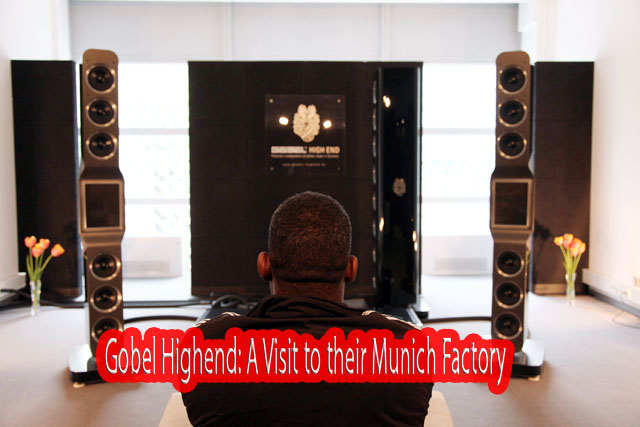

The steady growth and magnitude of Munich’s High End show made my attempt at hearing everything I had intended to exhaustive and futile. Even with two cameras in hand, there simply wasn’t enough time to cover all the wonderful sights and sounds. As usual, sacrifices had to be made in order to present our readers with the best and/or the most fascinating demonstrations at this year’s event. We surely hope that you did enjoy our report’s photos and commentary (Key Kim’s too!). As previously mentioned, the time spent listening to the sound of rooms was very far and few between due the crowds, noise and how much I had attempted to capture with my camera.
If there was one thing I had to get to the bottom of, it was the outstanding performance of the GöbelLacorde Statement series cables that I recently reviewed back in May (here). I felt compelled to find out more about its designer Oliver Göbel and the rest of his line-up that includes loudspeakers. Of course, as great sounding as the Göbel Lacorde Statment cables are, believe it or not, Oliver Göbel reminded me that they only came as an afterthought: something to bring the awe-inspiring $225k Göbel Epoque Reference loudspeakers to life.
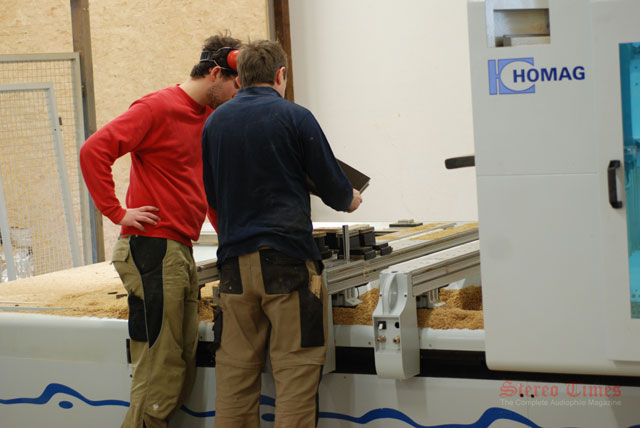
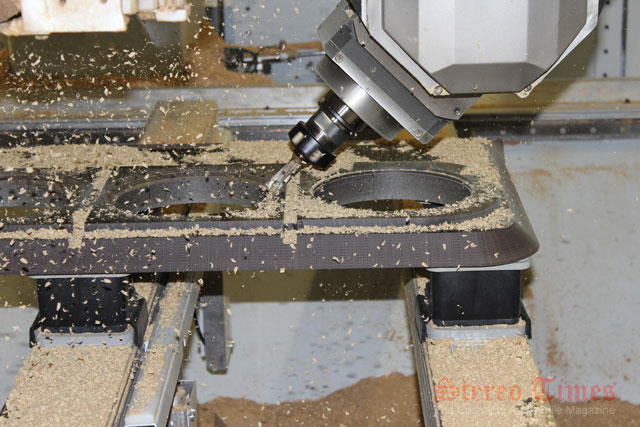
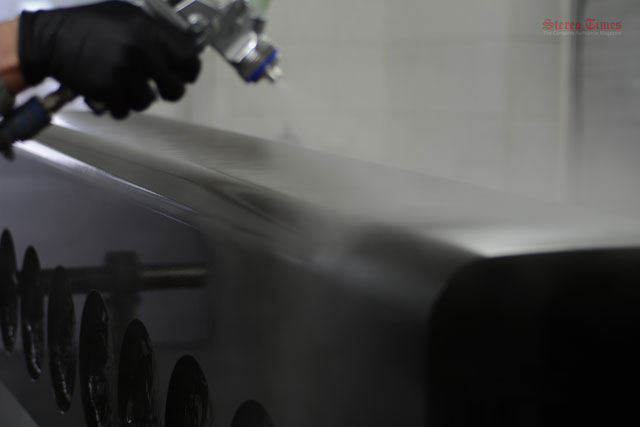
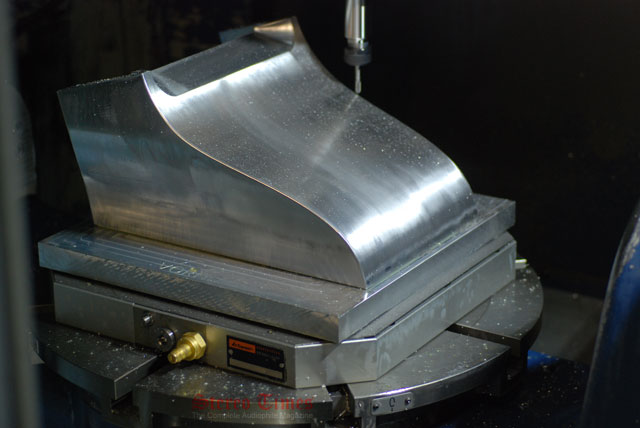
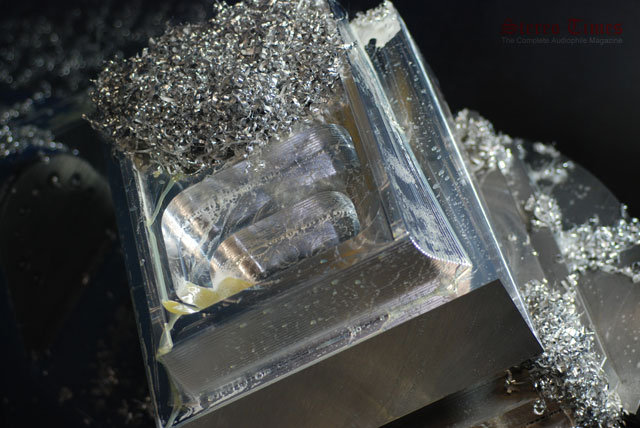
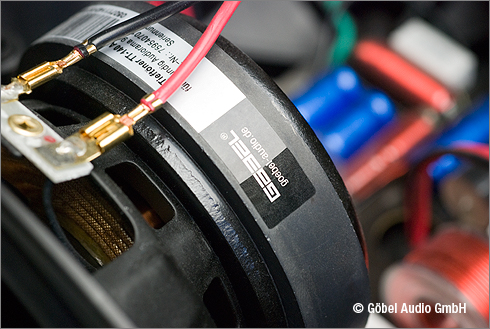
The above photos were sent to me via Oliver Göbel as an illustration of what takes place at Göbel High End on a day to day basis (When the show is not in town). The remaining photos were taken exclusively by me but unfortunately do not show the real work that goes into making Göbel High End products.
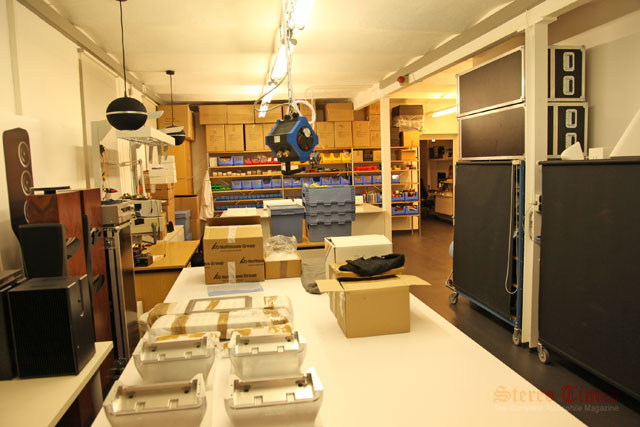
Neat, clean and orderly is what the Göbel factory is. As is most high-end audio manufacturers I’ve visited thus far during my travels in the USA, Europe and Asia. There is a method behind the madness of building such imposing transducers such as the Göbel Epoque Reference loudspeakers.
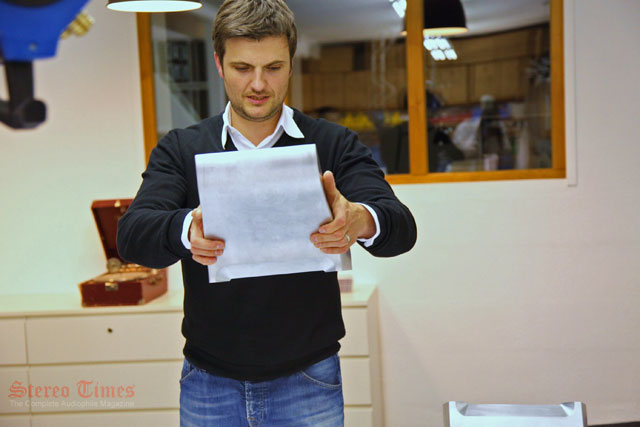
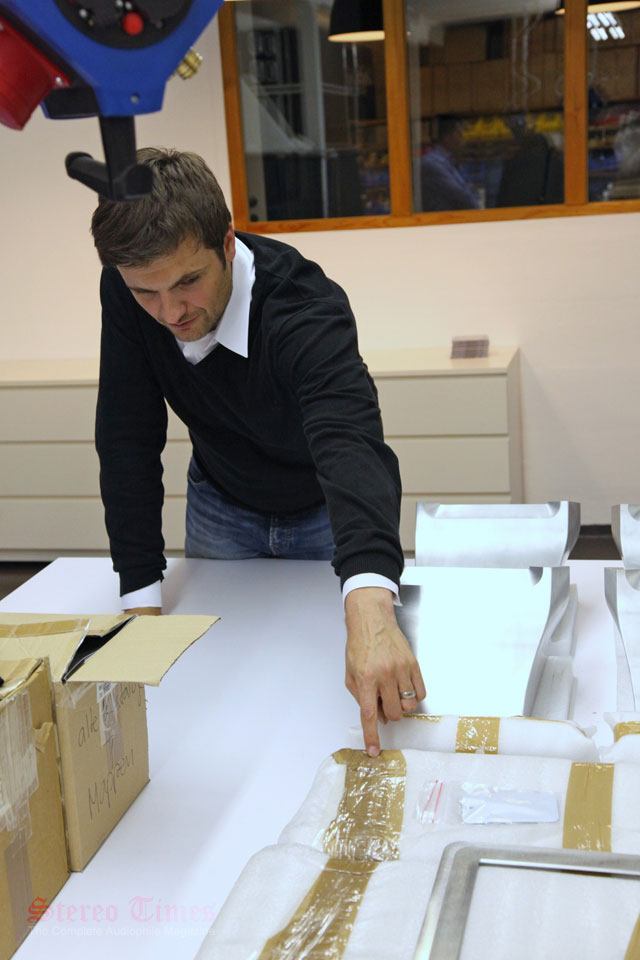

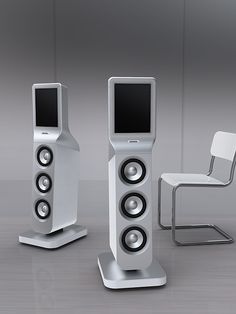
The young and talented Oliver Göbel (above) showing the uniquely shaped parts of his aluminum enclosures. Directly above is the enclosure to the Epoque Wall ($75k): A wall mounted version that also employs patented Carbon Excellence Bending Wave flat panel driver alongside six 7″ long throw drivers (2 active, 4 passive).
The final member of the Göbel family is the Epoque Fine ($125k photo right): a smaller floorstander that also sports the Bending Wave flat panel driver alongside a half-dozen woofer array. Each driver assembly is designed and built in-house says Göbel. Curious, I asked Oliver Göbel about the manufacturer/source/type of drivers used and he just looked at me and smiled “that, he said, I would like to keep a secret for now.”
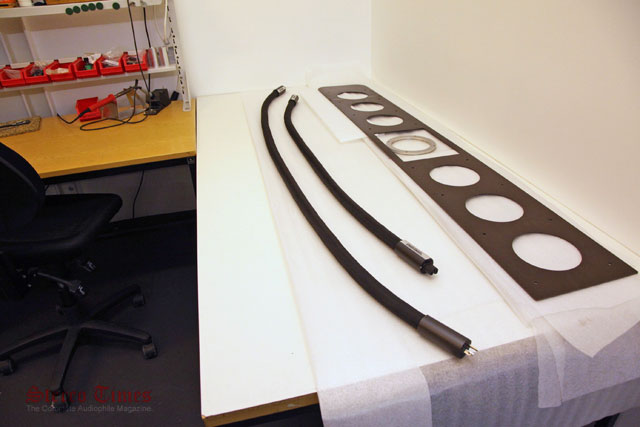

It was also nice to see an area that was dedicated to the company’s manufacturing of their reference calibre series cables and how fabulous they look upon completion.
As mentioned, their listening room was pretty empty due to their attendance at the local 2015 High End Show. As a result, I couldn’t wait to get back there – specifically the Göbel suite – to finally hear the Göbel Epoque loudspeaker system undisturbed!
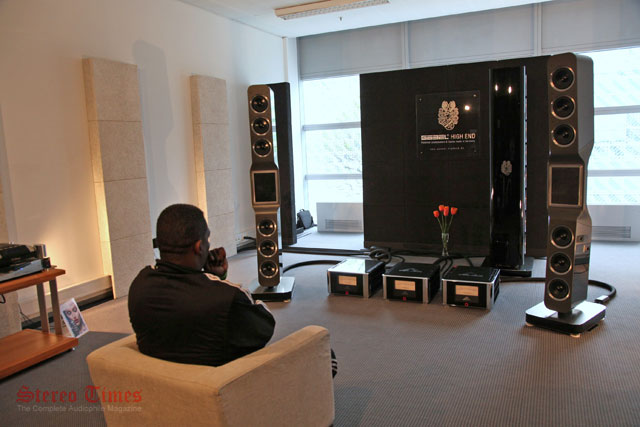
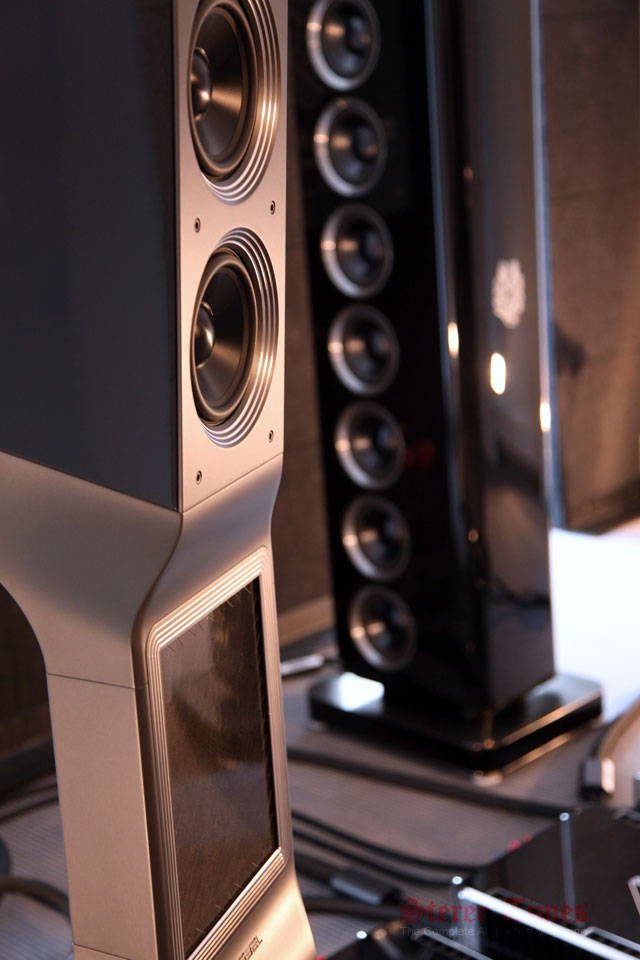
This system featured the
Epoque Reference loudspeaker: a 4-Ohm/86dB and nearly 7′ tall monolith that employs a patented GöbelCarbon
The system was driven by German-made Analogue Domain mono amplifiers, a quad stack of TotalDAC digital electronics and lastly, the latest CD transport/DAC combination from the legendary French brand Jadis. Of course, all cabling throughout, including AC cable, was Göbel Lacorde Statement.
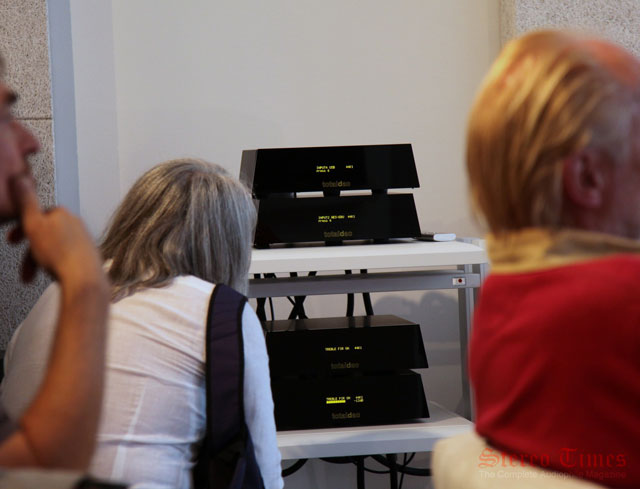
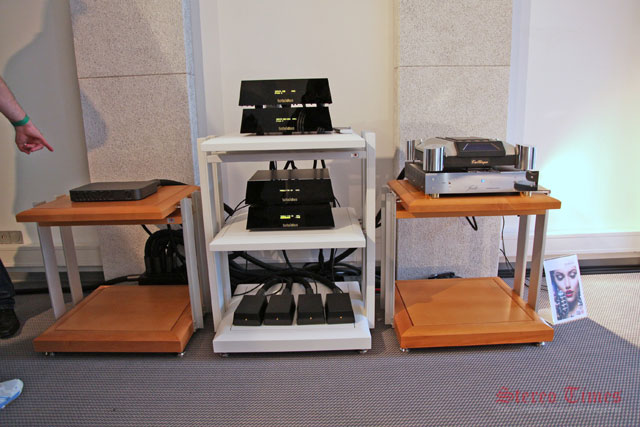
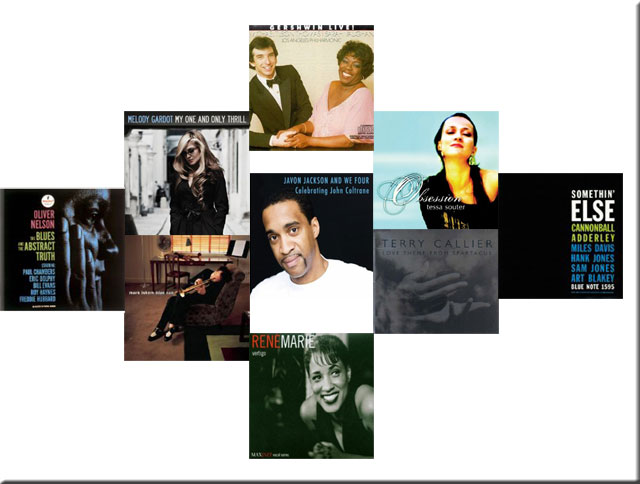
Although this was your typical High End show room with all its problems notwithstanding i.e., bright, reflective and unusually large (that can be a problem too), I noticed that it had transformed into a tranquil and convincingly more adequate space than I presumed after everyone left the building. The first thing I handed Oliver Göbel was a 64 gig USB flashdrive filled with a cache of my favorite music for which I could draw some reference with (all music files were upsampled to 192kHz/64-Bit compliments of digital brainiac Mark Porzilli and the Laufer Teknik Memory Player). Steadied by the old guard of jazz greats such as Oliver Nelson and Cannonball Adderley, alongside new young lions in Javon Jackson and Cyrus Chestnut. Great jazz songstresses like Sarah Vaughn led the way while new jazz trailblazers like the sultry Renee Marie, Tessa Souta and Melody Gardot gave me ample ammo at how accurate this system could perform. In the end, personal recordings such as these helped me find in rapid succession what the Göbel Sound was all about.

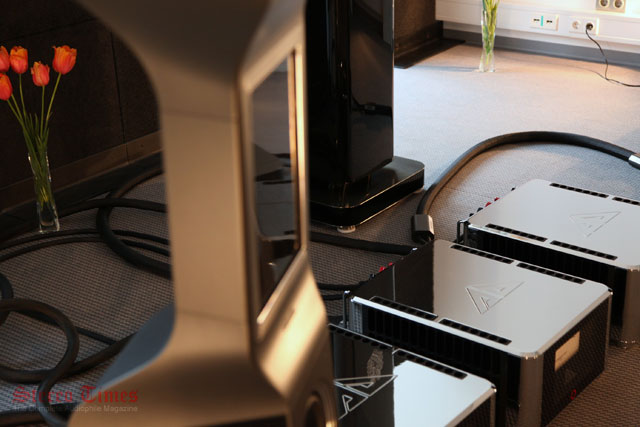
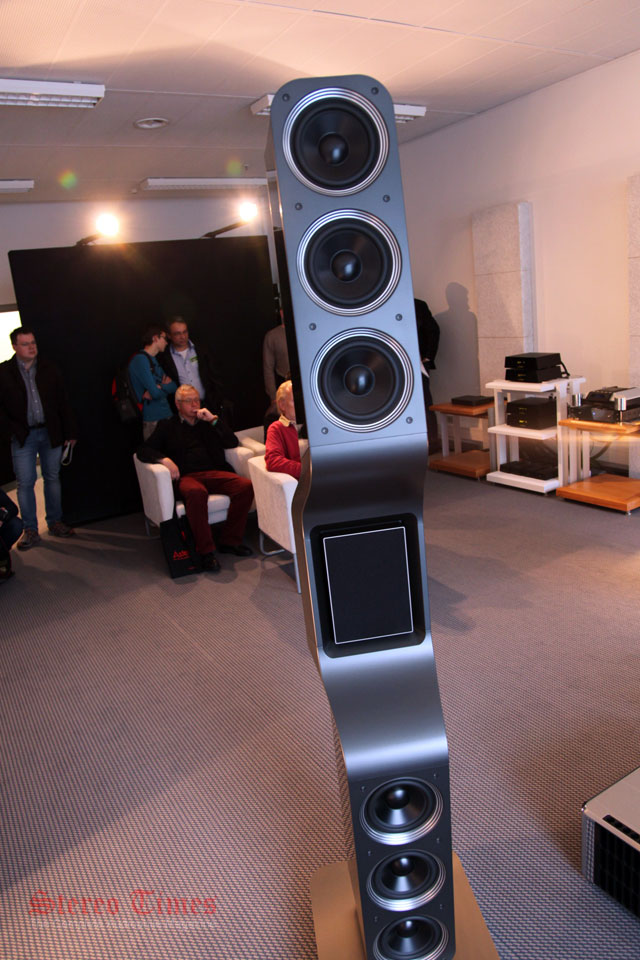
The first thing I noticed more than my first encounter back in 2012 was the immense space these tall angular-shaped dipoles create. Coupled by an uncanny sense of ease and flow without a hint of loudness or bravado, my ears reminded me almost immediately “YES, these are dipole loudspeakers.” The Epoque Reference seemed to melt into whatever song I chose and in such a unique way that I found myself more anxious to play one favorite song after the other. In rapid succession, as if in some vain attempt to figure out what makes these transducers so sonically unique from anything else I have heard – including the somewhat similar sounding electrostats and/or planar devices.
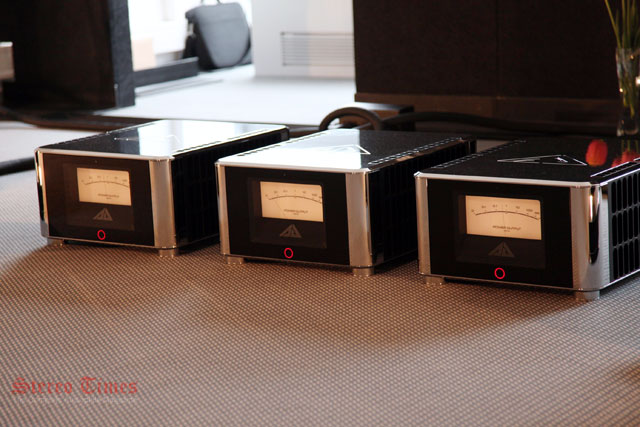
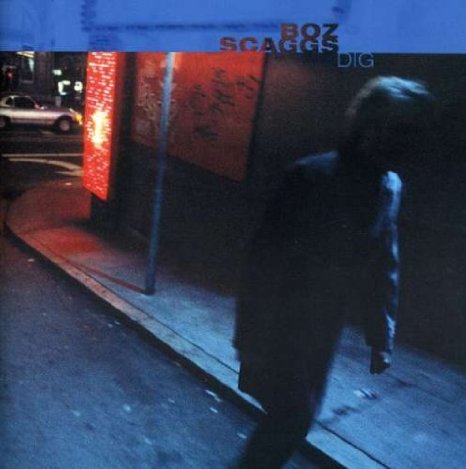 Putting them through the paces, I was amazed to find the Epoque Reference enjoyed being played life-like volume. Moreover, I really enjoyed pushing their sonic limits once finding how effortless and well-behaved they actually behave when driven hard. For example on Boz Scagg’s Thanks to You, starts off with this low-end bass growl that has to be from an electronic synthesizer rather than a electric bass or upright because no instrument I am aware of should be able to produce this type of bass tremor. But if your loudspeakers lack the efficiency and/or your amplifiers do not possess the power to reproduce this kind of effect, then it’s hard, if not impossible to detect. The nearly 1000 watt Analogue Domain mono amplifiers (above) allowed the Epoque Reference loudspeaker to reproduce this effect with room rattling results. This made it clearly obvious that the Göbel Epoque Reference has to be most impressive low-end I have ever encountered in a dipole design. Moreover, the quality of these reproduced (what felt like steady stream of 20Hz signals) without nary a hint of stress or strain. I know a little about bass reproduction as my Sunny Supreme Majestic horn loudspeakers employ 18″ woofers in their own dedicated 400 lbs cabinets and are driven by 600 watts per side compliments of Behold electronics (also German-made). In my relatively oddly shaped (21′ long by 17′ wide) listening space the one thing that has become the biggest surprise of all is how smartly integrated the Sunny Majestics bass is in that room. That being said, the Göbel Epoque Reference appears to go even further out and lower as well. As to which I prefer? The only way to really know for sure is to have them in my room side by side – Or have the Sunny’s in this very room. Without a side by side comparison no one can really tell. One thing’s certain, the Göbel Epoque Reference will make no apologies for its price or performance.
Putting them through the paces, I was amazed to find the Epoque Reference enjoyed being played life-like volume. Moreover, I really enjoyed pushing their sonic limits once finding how effortless and well-behaved they actually behave when driven hard. For example on Boz Scagg’s Thanks to You, starts off with this low-end bass growl that has to be from an electronic synthesizer rather than a electric bass or upright because no instrument I am aware of should be able to produce this type of bass tremor. But if your loudspeakers lack the efficiency and/or your amplifiers do not possess the power to reproduce this kind of effect, then it’s hard, if not impossible to detect. The nearly 1000 watt Analogue Domain mono amplifiers (above) allowed the Epoque Reference loudspeaker to reproduce this effect with room rattling results. This made it clearly obvious that the Göbel Epoque Reference has to be most impressive low-end I have ever encountered in a dipole design. Moreover, the quality of these reproduced (what felt like steady stream of 20Hz signals) without nary a hint of stress or strain. I know a little about bass reproduction as my Sunny Supreme Majestic horn loudspeakers employ 18″ woofers in their own dedicated 400 lbs cabinets and are driven by 600 watts per side compliments of Behold electronics (also German-made). In my relatively oddly shaped (21′ long by 17′ wide) listening space the one thing that has become the biggest surprise of all is how smartly integrated the Sunny Majestics bass is in that room. That being said, the Göbel Epoque Reference appears to go even further out and lower as well. As to which I prefer? The only way to really know for sure is to have them in my room side by side – Or have the Sunny’s in this very room. Without a side by side comparison no one can really tell. One thing’s certain, the Göbel Epoque Reference will make no apologies for its price or performance.
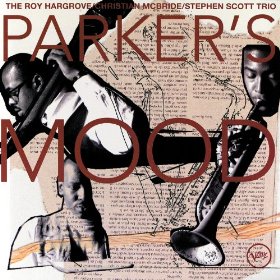 And of course, the upper midbass was the next thing I noticed that stood out. The clarity, speed and harmonic intonation of the bass going further up the frequency ladder was just as impressive as the lowest bass notes. Roy Hargrove’s trumpet on Parker’s Mood contrasted by Stephen Scott on piano and Christian McBride on bass gives a great example of just how fast and transparent the Epoque Reference are when it comes to great source material such as this song. Of course, credit has to be given to the Analogue Domain amplifiers due to their uncanny ability to get out of the way while maintaining a sense of authority and control in the low frequencies that left both Key and I speechless. Keep in mind, the Epoque Reference use a dozen 7″ midbass drivers; six front-firing and six rear-firing. Of these, only the four drivers located directly above and below their midrange Bending Wave driver (rear-firing as well) are active. The remaining eight drivers serve as passive radiators.
And of course, the upper midbass was the next thing I noticed that stood out. The clarity, speed and harmonic intonation of the bass going further up the frequency ladder was just as impressive as the lowest bass notes. Roy Hargrove’s trumpet on Parker’s Mood contrasted by Stephen Scott on piano and Christian McBride on bass gives a great example of just how fast and transparent the Epoque Reference are when it comes to great source material such as this song. Of course, credit has to be given to the Analogue Domain amplifiers due to their uncanny ability to get out of the way while maintaining a sense of authority and control in the low frequencies that left both Key and I speechless. Keep in mind, the Epoque Reference use a dozen 7″ midbass drivers; six front-firing and six rear-firing. Of these, only the four drivers located directly above and below their midrange Bending Wave driver (rear-firing as well) are active. The remaining eight drivers serve as passive radiators.
Saving the best for last
Once settled in, I became more accoustomed with the outstanding bass qualities of the Göbel Epoque Reference loudspeaker. After a half-hour or so, I began noticing something uniquely strange as to what the midrange driver was relaying to me as well. It took a little while, but once I started to get a grasp on the cable’s sonic signature (or lack thereof) – its intense but delicate grasp of bass notes and increased speed, pitch and control of the higher frequency extremes. Then, and only then was I able further attempt to figure what that Carbon Excellence Bending Wave driver was doing. Covering the frequencies between 30kHz – 170Hz essentially makes this Bending Wave driver a marvel of science. Listening to it perform this marvel was even more impressive than its specs.
At first, you think something’s missing as if there’s this slight sparkle around voices and instruments that’s nonexistent. Should they be there? Not so sure anymore. Of course, this is what gives this speaker an almost uncanny sense of realism and dimensionality. The lack of any hyper excited tweeters (of any type), or high-frequency crossovers, parts/resistors made this listening session a most unusual experience. Everything felt more natural and realistic. I got it. The HiFi sheen was gone. This, I remind you without nary a tweek or gizmo I’ve become so fond of in sight. All things considered equal, I did find that the sound didn’t get too far outside the speaker’s physical location but that was more a question of setup than this speaker’s sheer capabilities. In the end, I felt as though I was listening to a transducer that really got out of the way and allowed the music through.
A speaker, dare I say, that I would enjoy owning and growing old with.
I am certain that, fed with the right ancillary electronics, the Epoque Bending Wave driver has to be among the most intriguing driver technologies available today and certainly among the most alluring I have encountered. Coupled to a twelve powerful midbass drivers takes it to a place that few can compete with outside of the mighty big horns. In fact, I have never heard a planar, electrostat or anything of its ilk perform to such high standards especially when it comes to melding its ultra-natural midrange and high-frequencies with its low-end. The achilles-heel of planars and electrostats has always been pointed at their lack of prowess in the bass and dynamics. Not here. In fact, I would have to say outside of the Epoque Reference’s outstanding midrange it was its bass power, control and performance that stood out almost as much. At $200k, this loudspeaker is nothing short of Lotto dream for most of us. However, if you’re that fortunate to afford this level of technical sophistication and can look beyond the ordinary and over priced alternatives, trust and believe this is one of the few speakers I would want to live with. Immediately! 

clement perry
Stereo Times Masthead
Publisher/Founder
Clement Perry
Editor
Dave Thomas
Senior Editors
Frank Alles, Mike Girardi, John Hoffman, Russell Lichter, Terry London, Moreno Mitchell, Paul Szabady, Bill Wells, Mike Wright, Stephen Yan, and Rob Dockery
Current Contributors
David Abramson, Tim Barrall, Dave Allison, Ron Cook, Lewis Dardick, Dan Secula, Don Shaulis, Greg Simmons, Eric Teh, Greg Voth, Richard Willie, Ed Van Winkle, and Rob Dockery
Music Reviewers:
Carlos Sanchez, John Jonczyk, John Sprung and Russell Lichter
Site Management Clement Perry
Ad Designer: Martin Perry



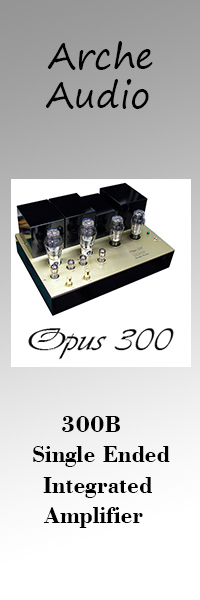

Be the first to comment on: Gobel High End: A Visit to their Munich Factory